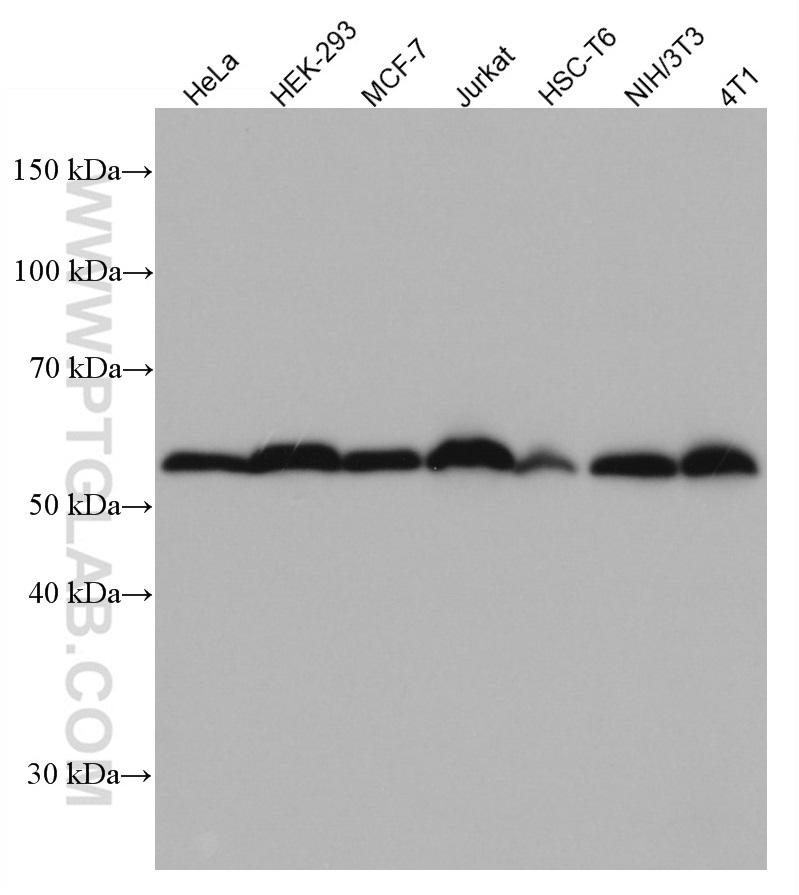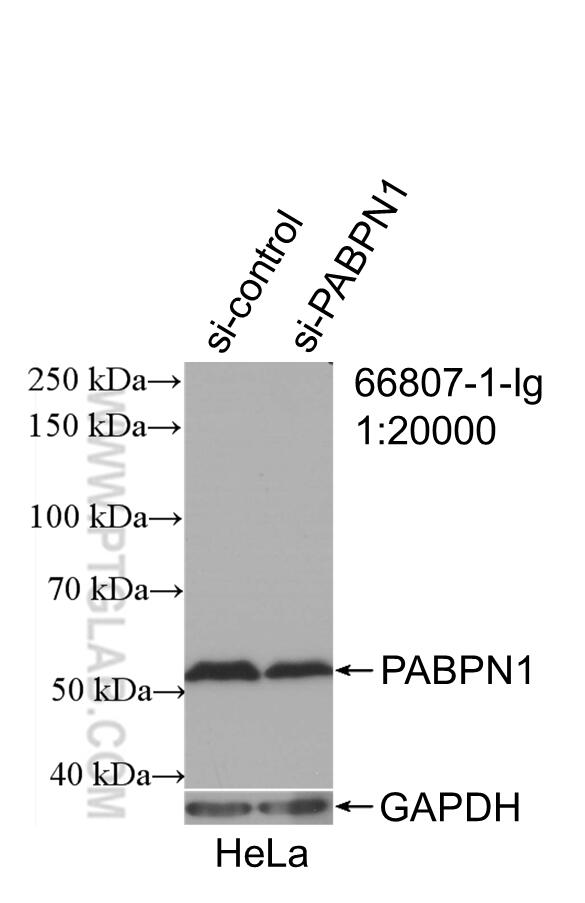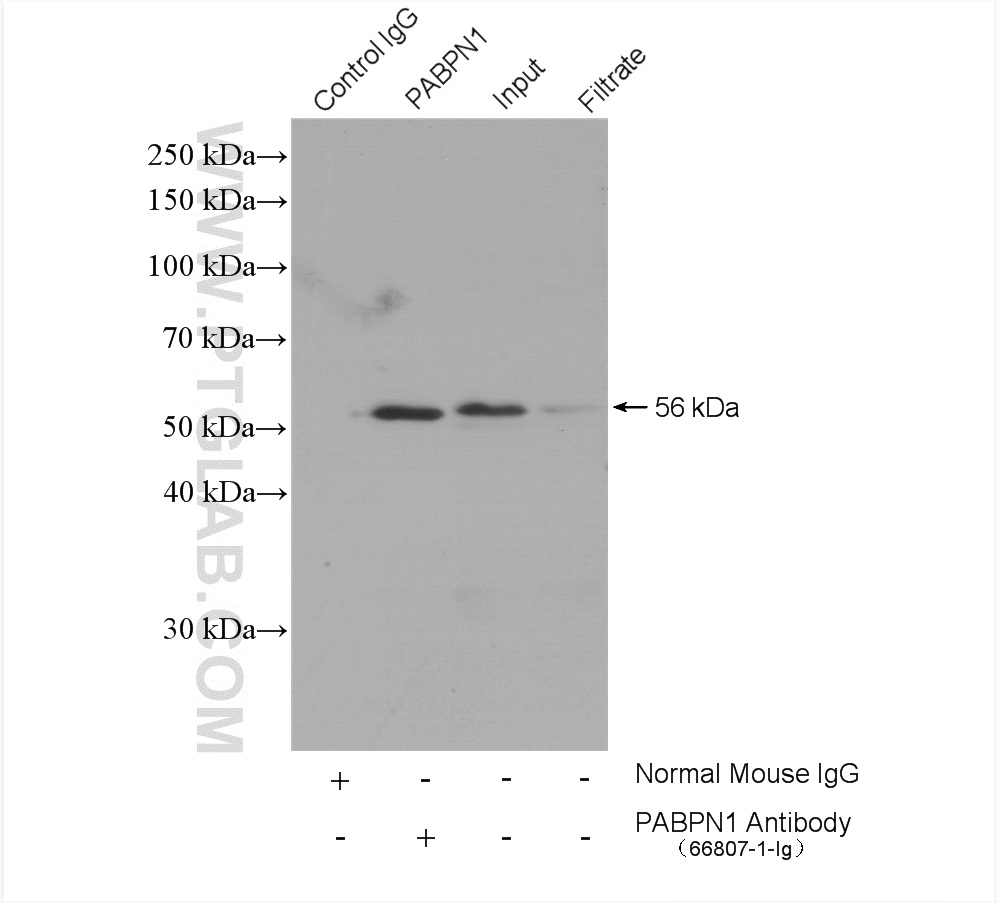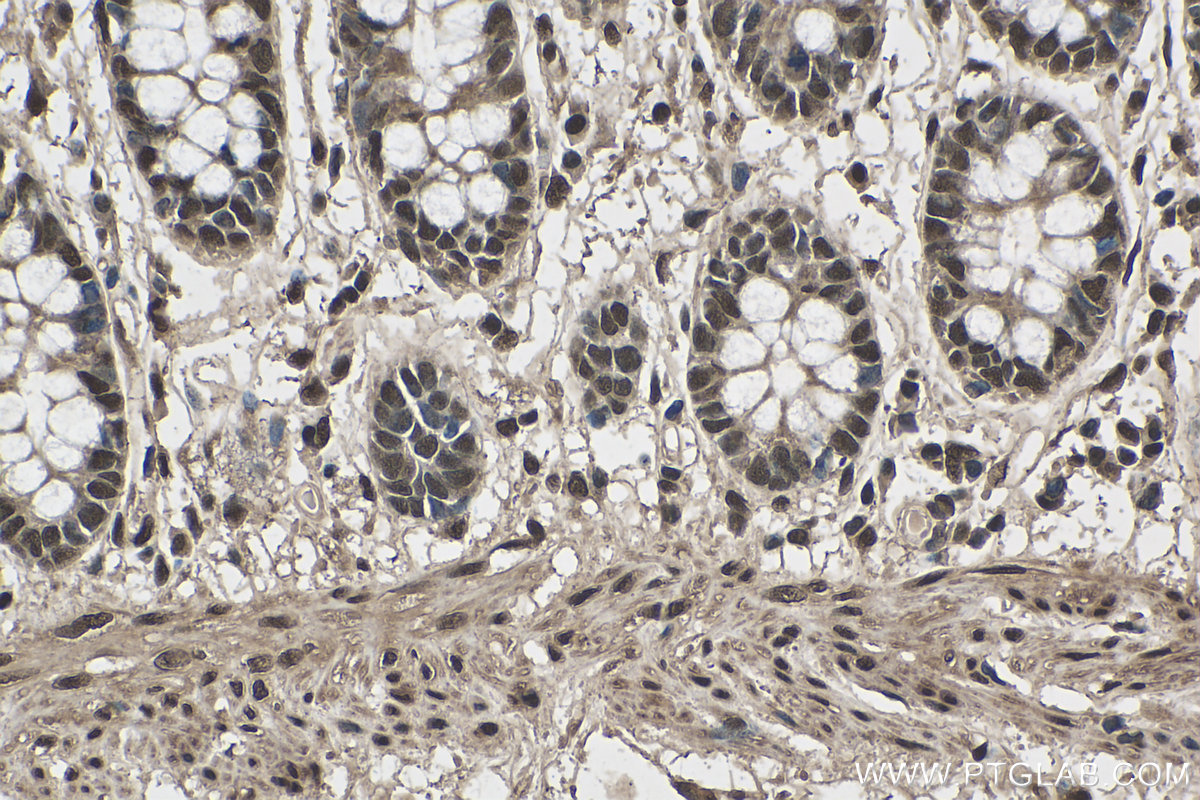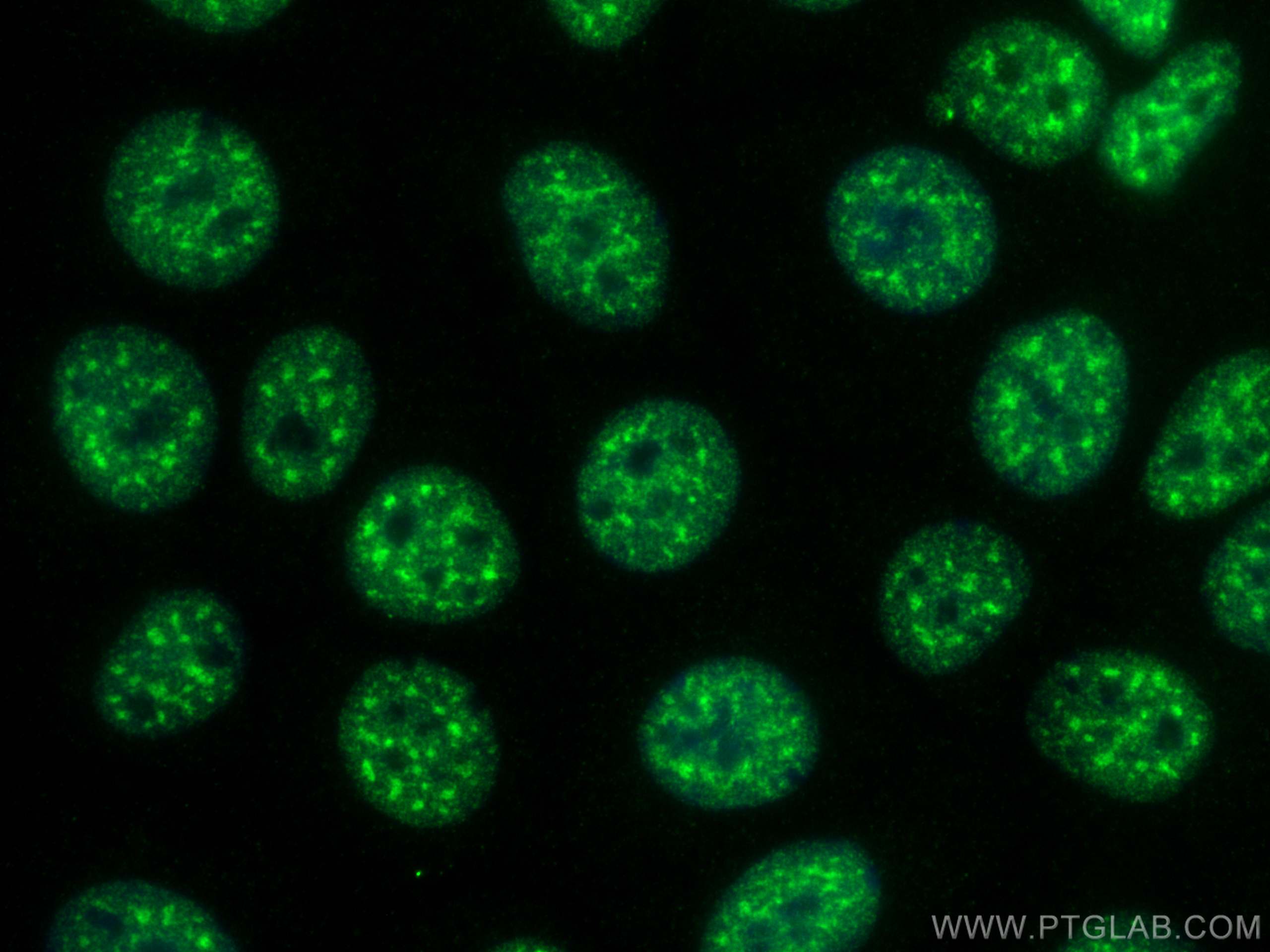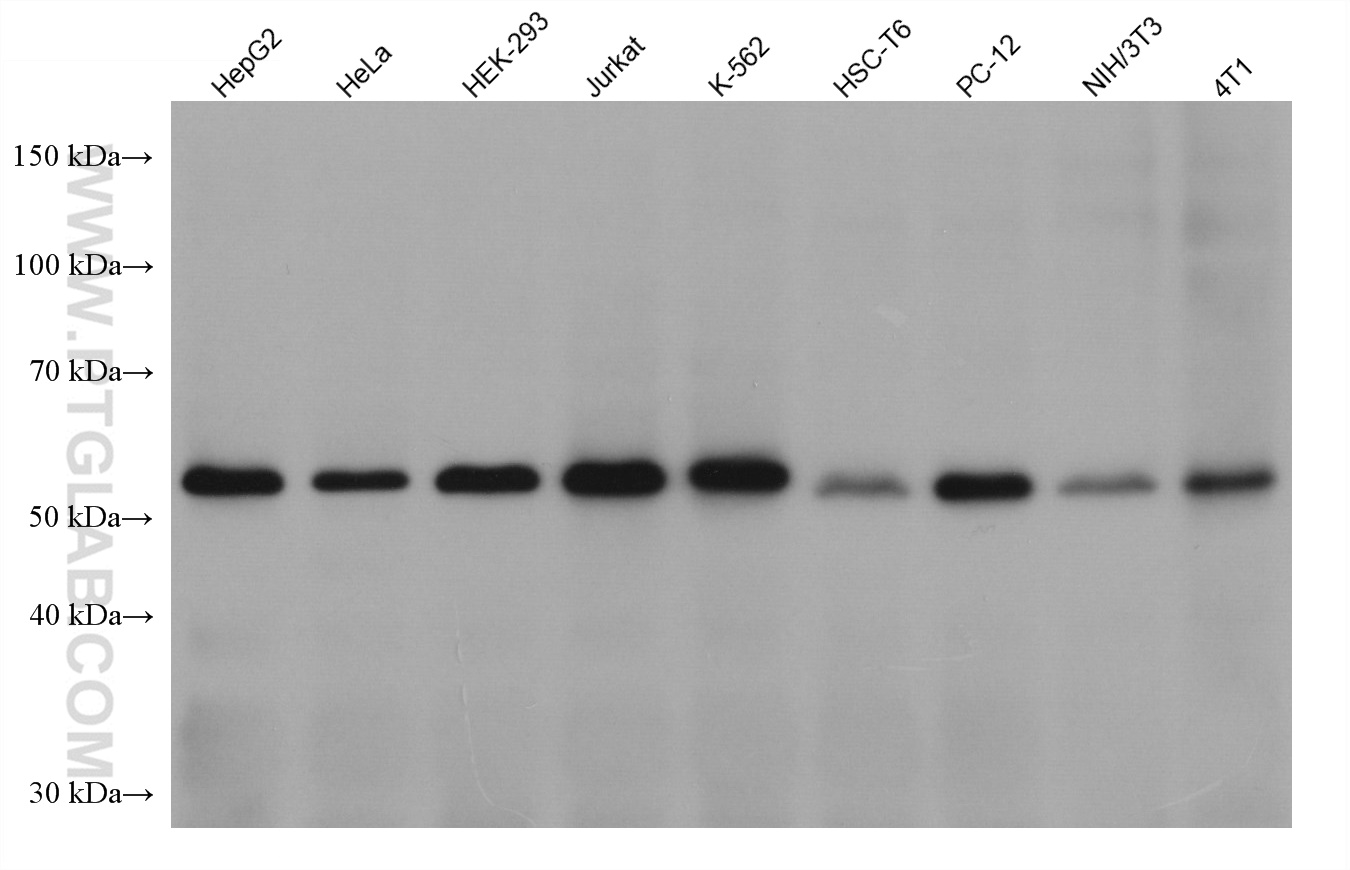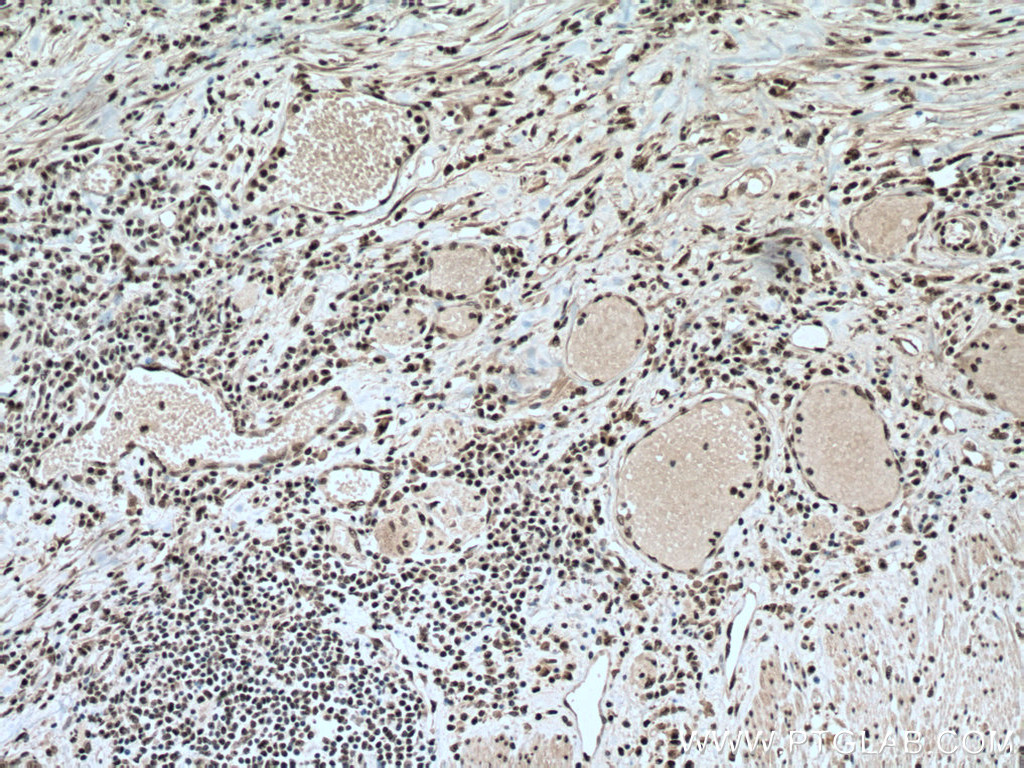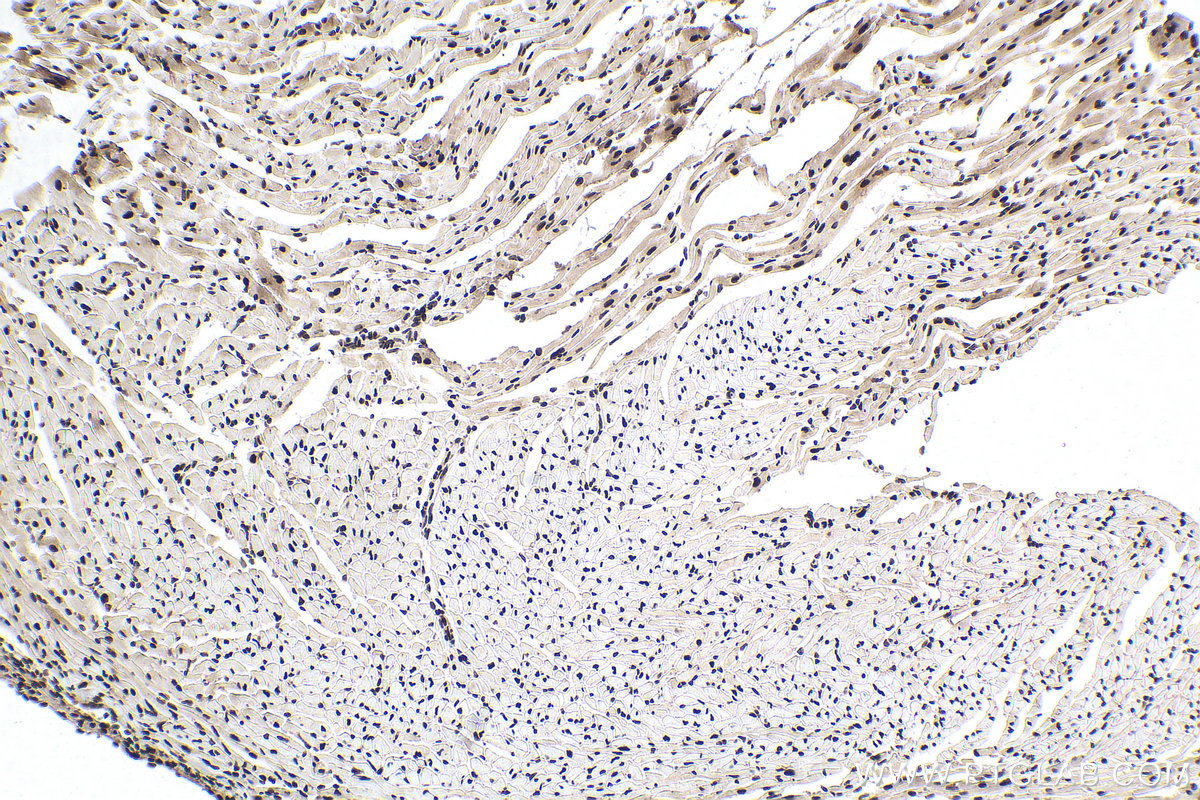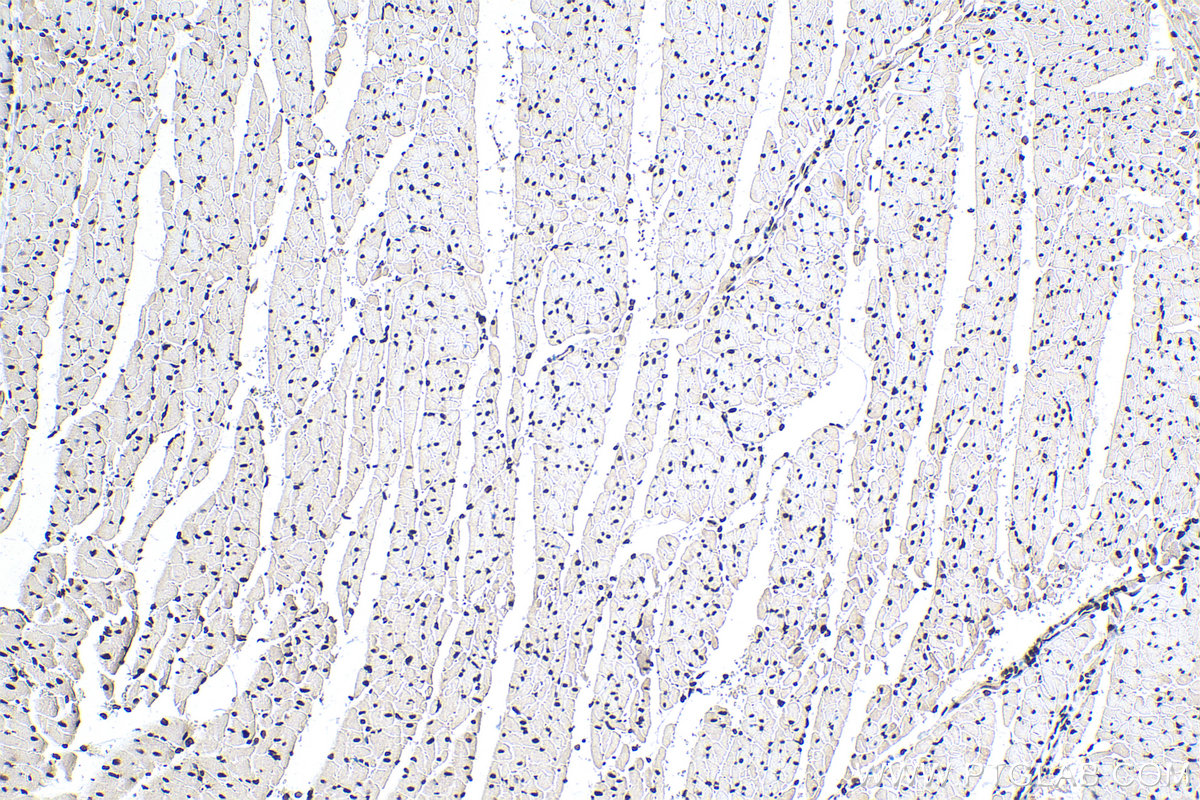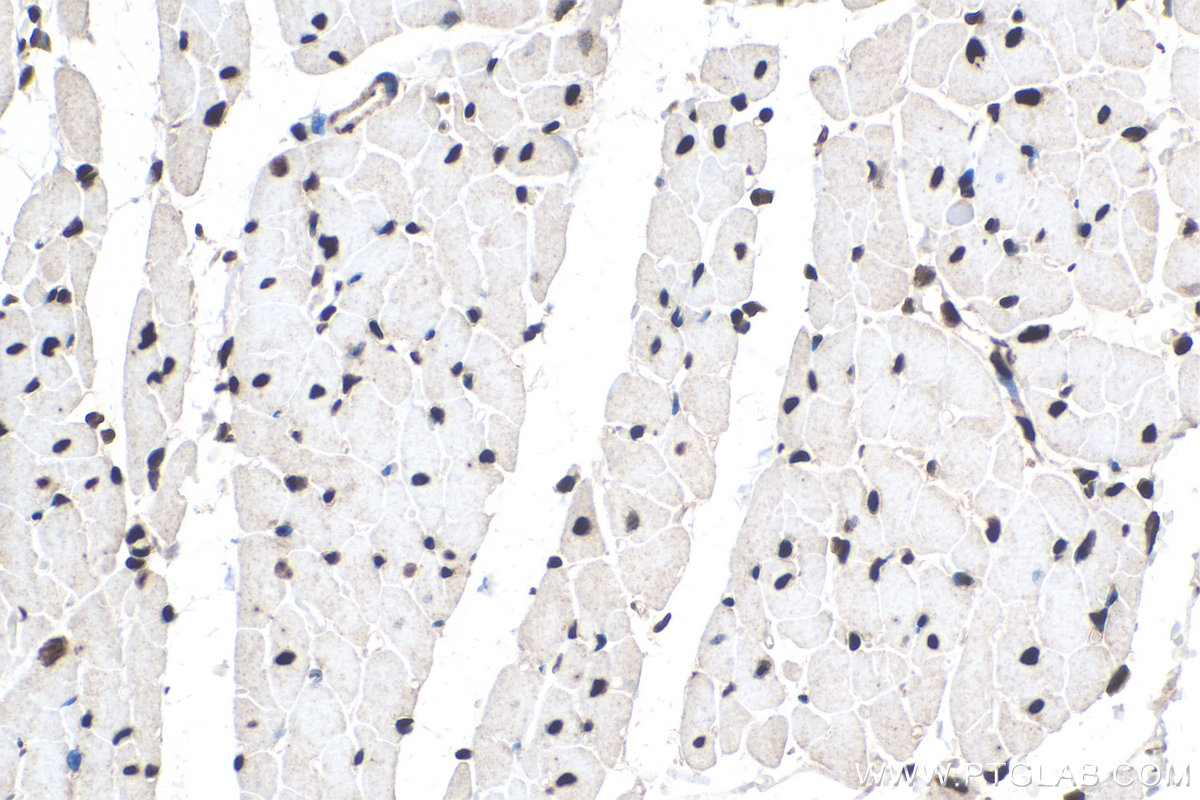- Featured Product
- KD/KO Validated
PABPN1 Monoclonal antibody, PBS Only
PABPN1 Monoclonal Antibody for WB, IHC, IF/ICC, IP, Indirect ELISA
Host / Isotype
Mouse / IgG1
Reactivity
human, mouse, rat
Applications
WB, IHC, IF/ICC, IP, Indirect ELISA
Conjugate
Unconjugated
CloneNo.
3C12E12
验证数据展示
产品信息
66807-1-PBS targets PABPN1 in WB, IHC, IF/ICC, IP, Indirect ELISA applications and shows reactivity with human, mouse, rat samples.
| Tested Applications | WB, IHC, IF/ICC, IP, Indirect ELISA Application Description |
| Tested Reactivity | human, mouse, rat |
| Immunogen | PABPN1 fusion protein Ag27470 种属同源性预测 |
| Host / Isotype | Mouse / IgG1 |
| Class | Monoclonal |
| Type | Antibody |
| Full Name | poly(A) binding protein, nuclear 1 |
| Synonyms | PABP-2, PABP2, PABII, PAB2, Nuclear poly(A)-binding protein 1 |
| Calculated Molecular Weight | 33 kDa |
| Observed Molecular Weight | 50-56 kDa |
| GenBank Accession Number | BC010939 |
| Gene Symbol | PABPN1 |
| Gene ID (NCBI) | 8106 |
| RRID | AB_2882150 |
| Conjugate | Unconjugated |
| Form | Liquid |
| Purification Method | Protein G purification |
| UNIPROT ID | Q86U42 |
| Storage Buffer | PBS Only |
| Storage Conditions | Store at -80°C. The product is shipped with ice packs. Upon receipt, store it immediately at -80°C |
